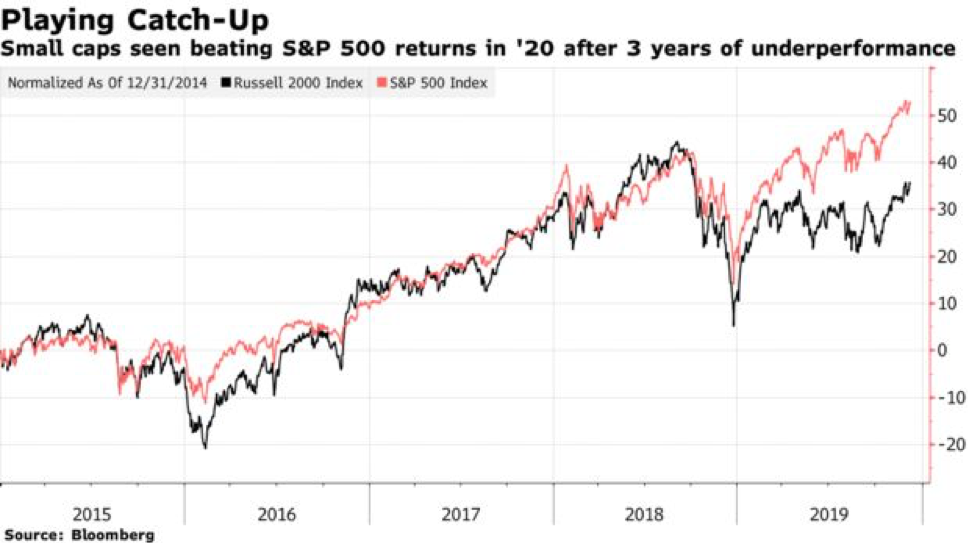Small cap equities have been lagging behind their large cap brethren for the last few years, but 2020 could be the year that investors could go big on small cap equities. A Bloomberg article referenced a survey of five strategists and four expect small-cap stocks to outperform in 2020.
“While not a huge amount, better gains would mark a reversal from the past three years, when the Russell 2000 trailed the S&P 500 annually in a streak of sub-par returns not seen since 1998,” the article noted. “Small-caps have started picking up momentum in recent months as optimism over trade talks and the economy helped restore appetite in a group that by some measure is trading at a 18-year low relative to large-caps.”
As such, investors would be keen to keep small cap equities on their radar.
“Small-caps could be the place to be,” said Dan Veru from Palisade Capital Management. “You’ve seen the underlying strength of the economy. If we do in fact get a trade deal, that’s going to make those more U.S.-centric companies much more exciting.”
While the Russell 2000 has been returning 21% in 2019, it pales in comparison to other indexes like the S&P 500, which have been generating more. Following the financial crisis over 10 years ago, investors sought the safety of large cap stocks, but the tide may be turning.
“We expect small caps to outperform large caps in the coming months as we shift from ‘Downturn’ to ‘Recovery’ in the U.S.,” said Jill Carey Hall, a Bank of America strategist, who forecasts the Russell 2000 will beat the bank’s 5% return expected for the S&P 500 in 2020.

For investors looking for continued upside in large cap equities over small caps, the Direxion Russell Large Over Small Cap ETF (NYSEArca: RWLS) offers them the ability to benefit not only from large cap equities potentially performing well, but from their outperformance compared to their small cap brethren.
RWSL features:
- The Index measures the performance of a portfolio that has 150% long exposure to the Russell 2000® Index (the “Long Component”) and 50% short exposure to the Russell 1000® Index (the “Short Component”).
- On a monthly basis, the Index will rebalance such that the weight of the Long Component is equal to 150% and the weight of the Short Component is equal to 50% of the Index value.
- In tracking the Index, the Fund seeks to provide a vehicle for investors looking to efficiently express a small-capitalization over large-capitalization investment view by overweighting exposure to the Long Component and shorting exposure to the Short Component. One cannot directly invest in an index.
For more relative market trends, visit our Relative Value Channel.

